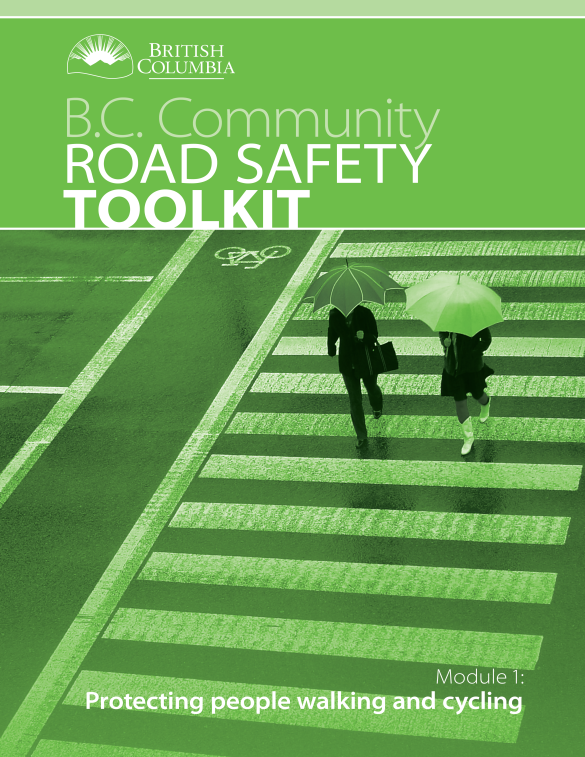Raheem Dilgir, President, TranSafe Consulting Ltd. and Past Chair of the Safe Roads and Communities Working Committee of RoadSafetyBC, provides an overview of the BC Community Road Safety Toolkit.
This article is prepared on behalf of TAC’s Small Municipalities Task Force, to focus on the issues and challenges affecting smaller communities.
 RoadSafetyBC is the lead government agency responsible for road safety in British Columbia, working in collaboration with partners and stakeholders to maximize safe and responsible operation of motor vehicles in B.C.
RoadSafetyBC is the lead government agency responsible for road safety in British Columbia, working in collaboration with partners and stakeholders to maximize safe and responsible operation of motor vehicles in B.C.
British Columbia updated its road safety strategy in January 2016, with a vision of moving towards zero fatalities and zero serious injuries. The Safe Roads and Communities Working Committee’s (SRCWC) mandate is to develop knowledge and tools to improve road safety outcomes for all road users within the province.
In 2015, a survey was conducted of all BC communities. Eighty-one municipalities identified the top safety issues in their communities, and factors that were preventing them from progressing towards road safety and collision reduction. One of the key factors was the lack of road safety knowledge and expertise. The SRCWC therefore undertook a project to develop a toolkit to address the top safety themes, drawing on best practices from jurisdictions around the world.
The most effective and promising safety measures were identified, and for each measure, a 1-2 page summary was developed to describe and illustrate the concepts. The toolkit also provides basic application guidance, documented safety benefits, implementation advice, and links to more detailed information.
The initial modules of the BC Community Road Safety Toolkit are:
Module 1 describes measures that separate vulnerable road users in time or space, increasing their visibility, and improving safety through green transportation options. Specific countermeasures include advance stop lines, protected intersections, leading pedestrian intervals, rapid rectangular flashing beacons, transit-oriented development, and safer parking lot design.
Module 2 describes measures not directly related to pedestrians and cyclists that improve safety by promoting reduced vehicle speeds and safe roadway and intersection design. Specific countermeasures include speed limits, gateways, high-friction pavement, roadway lighting, access management, right-turn-on-red prohibition, and improved slip-lane design.
Module 3 includes an overview of road safety management concepts and processes. Specific topics include road safety action plans, road safety audits, engagement, safe routes to school, and planning for safety as part of the land development process.
Future toolkit modules will be added based on feedback from BC communities. The development of the toolkit brought together experts from various communities including local government, health agencies, the insurance sector, cycling coalitions, and other stakeholders. RoadSafetyBC staff provided additional support. Much of the BC Community Road Safety Toolkit’s content is expected to be useful to other jurisdictions across Canada, particularly when it responds to similar issues raised by these communities.
For additional information, contact RoadSafetyBC@gov.bc.ca.